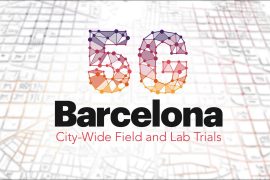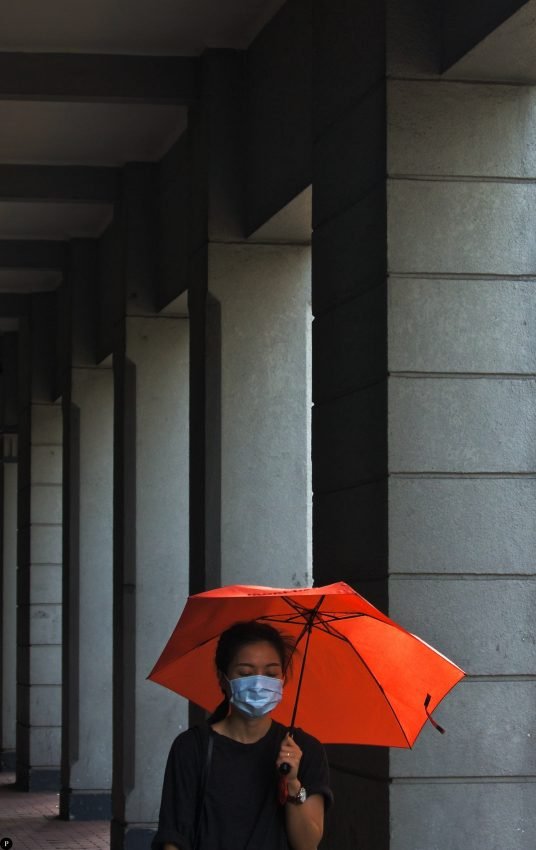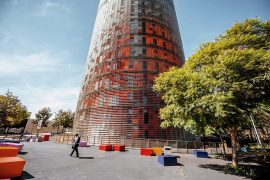[dropcap letter=”T”]
he pampero is a meteorological phenomenon typically of the River Plate. Thanks to this phenomenon the winds of the South Pacific, attracted by the anticyclone of the south of Brazil, extend through Argentina and Uruguay. It manifests itself with short and intense storms and sudden drops in temperature, both in winter and in summer. The victory of Jair Bolsonaro in Brazil and the Argentine economic problems have turned the Southern Cone into a centre of storms crossed by intense gusty winds that could become political or economic pamperos.
 The victory of a Brazilian right-wing candidate has shown the number of problems the region has, although many are not exclusive of it, and should also allow reflection on its great challenges. The elections in Brazil, like the rest of the intense electoral cycle 2017-2019, take place in a context of a strong deterioration of democracy and its institutions, loss of confidence in traditional political parties and their leaders, the growth of serious conflicts -such as citizen insecurity and corruption- and, finally, the political prominence of evangelical churches.
The victory of a Brazilian right-wing candidate has shown the number of problems the region has, although many are not exclusive of it, and should also allow reflection on its great challenges. The elections in Brazil, like the rest of the intense electoral cycle 2017-2019, take place in a context of a strong deterioration of democracy and its institutions, loss of confidence in traditional political parties and their leaders, the growth of serious conflicts -such as citizen insecurity and corruption- and, finally, the political prominence of evangelical churches.
Hence the question about the depth of the Bolsonaro tsunami and the political and economic changes that could occur in the Southern Cone, in the short term. According to the Economic Commission for Latin America and the Caribbean (ECLAC), the Latin American continent grew 1.3% in 2018 and will grow 1.8% in 2019, thanks to the recovery of domestic demand and the slight increase in investment. Such a modest performance responds to the poor performance of Argentina and Brazil, which occupy the last positions of the region together with Venezuela and Nicaragua.
ECONOMY AND POLITICS
The Argentinian economy, threatened by a strong recession, decreased by 2.8% in 2018 and will decrease by 1.8% in 2019. The Brazilian giant also worries that its GDP increases by 1.4% (2.4% in 2019). Although a greater recovery was expected, political uncertainty prevented this from happening, and kept both the unemployment rate and the fiscal deficit high. Among the South American countries that grow most are Paraguay (4.6% in 2018 and 4.7% in 2019) and to a lesser extent Chile (3.9% and 3.5%) and Uruguay (1.9% and 1,5%).
The turning point occurred in December 2015 with the victory of Mauricio Macri over the Kirchnerist candidate Daniel Scioli. Since then, other processes have been happening, such as the impeachment of August 31st, 2016, which evicted Dilma Rousseff
The political landscape of the Southern Cone today is very different from that of years ago. In less than a decade there has been a radical change in the orientation of its countries. At the beginning of 2010 all had populist governments -Argentina and Paraguay- or left or centre-left -Uruguay, Brazil and Chile. The change is 180 degrees turn, since only Uruguay is governed by a leftist coalition, the Frente Amplio, and yet by the end of October 2019 the first round of crucial presidential elections will be held.
Although it can be said that things began to change at the end of 2009, when Sebastián Piñera first conquered the Chilean presidency, or in June 2012, when the Paraguayan Parliament dismissed Fernando Lugo -who had governed since August 2008-, the turning point occurred in December 2015 with the victory of Mauricio Macri over the Kirchnerist candidate Daniel Scioli. Since then, other processes have been happening, such as the impeachment of August 31st, 2016, which evicted Dilma Rousseff, the victory that made possible the return of Sebastián Piñera to the Palacio de la Moneda (in Chile, consecutive re-election is not possible) in December of 2017 and the electoral victory of Mario Abdo, candidate of the Colorado Party of Paraguay, in April 2018.
END OF LONG GOVERNMENTS
In this manner concluded the series of long governments, whether they were constituted by parties, a single person or were “matrimonial”. Among the first ones, we shall mention the case of Chile, where the Concertación, the alliance of the socialist parties and the Christian Democracy, governed of 1990 to 2010 and of the 2014 to 2018; also, we can refer that of Brazil, with the governments of the Workers’ Party (PT) of Luiz Inácio Lula da Silva (2003-2011) and Rousseff (2011-2016), and that of Uruguay, with the Frente Amplio, present since 2005 and then with Tabaré Vázquez (2005-2010 and 2015-2019) and José Mujica (2010-2015). And, third category, there is the Kirchner couple, whose original idea of alternating each other in front of the government indefinitely was cut short by the death of Néstor Kirchner in 2010. However, he governed between 2003 and 2007 and afterwards came the two mandates of Cristina Fernández (from 2007 to 2015).
The profile of Bolsonaro and the profound transformation of Brazilian politics allowed the triumph of a right-wing candidate in democratic elections, something that did not happen in the Southern Cone since the beginning of the transition. This leads us to ask ourselves about a possible contagion effect in neighbouring countries. The controversial and polarizing discourse, the defence of a values agenda and a strong-arm policy in the fight against crime, and the ideological proximity of Bolsonaro with Donald Trump and Steve Bannon, have begun to worry the neighbourhood.
The reasons for these political changes, especially in Argentina and Brazil, arise from a certain social repulse of a style of government associated with corruption. Along with it, a poor economic management is penalized, a management whose consequences increased when ended the unrepeatable period of bonanza of the super cycle of commodities, the largest expansionary cycle of the recent Latin American history. Brazil was in recession in 2015 and 2016 -both years there was a negative annual growth of -3.5%- and Argentina from the end of 2013 to 2015.
THE MACRI EFFECT
Macri was elected, obtaining a tight victory in the second round, and took office in the middle of a difficult economic situation. That was joined by the Kirchnerist inheritance -heavy slab that threatened governance- characterized by galloping inflation with systematically distorted figures since the years of Néstor Kirchner, the exchange rate trap -difficulties to buy foreign currency from individuals and businesses, and repatriation of profits by foreign investors-, a public deficit of 7% of GDP at the end of 2015, heavily subsidized sectors and tariffs for public services lagging behind in relation to inflation.
In view of the important support that Kirchnerism had, Macri opted for a gradualist policy, and maintained a good part of the social programs instead of revealing all the difficulties and implementing a hard adjustment. Simultaneously, he trusted in the return of foreign investment, which would allow to relaunch economic growth. His proposals had some initial successes, which facilitated the victories of pro-government candidates in the mid-term elections of October 2017. There even began rumours about his re-election in 2019.
However, in April 2018, a new crisis erupted, initially manifested as a currency crisis, which turned everything upside down. Then reappeared the ghosts of the 2001 corralito in the form of a strong devaluation and rise of rates, next to a runaway inflation. The agreement with the International Monetary Fund (IMF), for 56,300 million dollars, avoided a new trip to the underworld although many Argentines, influenced by Kirchnerism, saw themselves reflected in a narrative focused on imperialist exploitation, misery and unemployment.
After the victory of Macri, many analysts believed that if he reached the end of his mandate that would be something historic, since it was the first time since 1946 that something similar happened with a democratically elected non-Peronist president. The names of Alfonsín and De la Rúa and the farthest from Frondizi and Illia resounded. Today the bar has been raised and the future of macrism will be decided next October, in the elections. Although there is still an eternity in between, and everything can change, the possibility of Macri being president again depends on several variables, such as the progress of the economy, the Peronist renewal and the candidates that may concur.
If the government stabilizes the economy and the exchange rate of the peso against the dollar, and even if it promotes a certain economic recovery at the beginning of 2019, Macri’s options would increase. These would also be high if he competes against Cristina Fernández, since today her rejection is greater than that of the president. Therefore, a renewed and reorganized Peronism around a credible and powerful candidate would be worse than the return of the previous president.
The reasons for these political changes, especially in Argentina and Brazil, arise from a certain social repulse of a style of government associated with corruption. Along with it, a poor economic management is penalized
THE BOLSONARO ENIGMA
The new Brazilian government started on January 1st. So far, there are more uncertainties than certainties about its main lines of action, especially how much it will be able to fulfil everything promised beforehand. There are many commitments with very varied sectors, sometimes contradictory; the interests of the different groups that supported it, especially the most powerful, do not usually coincide. Privatizations will be an important point.
The economic super-minister, Paulo Guedes, graduated at the University of Chicago, is in favour of opening the economy and reducing the size of the State. However, the military that backed Bolsonaro are developmentalists and prefer to maintain strategic control of public companies. Another controversial issue is the transfer of Brazil’s embassy in Israel to Jerusalem, a key promise in the campaign, whereas farmers and meat exporters fear that such a gesture would compromise the sales of meat products to Arab countries.
MERCOSUR IN THE FUTURE
Mercosur is another issue with strong regional repercussions, especially considering the close connections between the Brazilian and Argentine economies. When Guedes said that Mercosur was not a priority for Brazil, since the Bolivarian bias that the regional bloc acquired made his country a “prisoner of ideological alliances”, something bad for the economy, caused great alarm. But, beyond the brutality of some opinions later nuanced, Mercosur needs a profound transformation if it wants to continue advancing. Apart from the agreements signed within Latin America, it only has free trade agreements (FTA) with Israel, Egypt and the Palestinian Authority, a good example of its paralysis.
Uruguay had already requested to make the bloc’s negotiations more flexible, including the possibility that each country could do it individually. The arrival of Bolsonaro and the openness of Guedes would make it possible to take steps in that direction. Cristina Fernández and Dilma Rousseff were quite hostile to the Pacific Alliance, a situation that had begun to change with Macri and it is possible that Bolsonaro still emphasizes on it, given the close ties he wants to have with the Chilean Sebastián Piñera.
From the regional perspective, another reason for concern is the attempt of a son of Bolsonaro to unite the most right-wing options in Latin America, in line with what Bannon is trying to do in the European Union (EU): to bring together all of populism nationalist and xenophobic. The election of diplomat Ernesto Araújo as foreign minister is also alarming given his criticism of globalism, the mechanism used in theory by Marxism to transform globalization and seriously injury the notion of Western civilization.
EVOLUTION OF THE SOUTH CONE
With the two great potencies of the Southern Cone mired in their own problems, the smaller countries (Chile, Uruguay and Paraguay) wait expectantly for the future evolution. Because they are open economies, especially the Chilean one, their growth depends on international markets. China is a relevant economic player and destination for many of the regional exports, such as Chilean copper or Uruguayan meats, not to mention the intense exchanges between Brazil and Argentina. Paraguay is the regional exception since it does not recognize the People’s Republic of China as an interlocutor.
The United States and the EU continue to be major trading partners for all of these countries, which is why it is important to close the Association Agreement between Mercosur and the EU soon. Despite great advances in the negotiation in recent months, there are still serious obstacles that prevent a happy ending. The obstacles come from both sides, since protectionism is not exclusive of any of them. However, the EU could make some additional concessions to reach an agreement that would provide enormous advantages and opportunities. It is time for Europe to say how much it cares about Latin America.



















